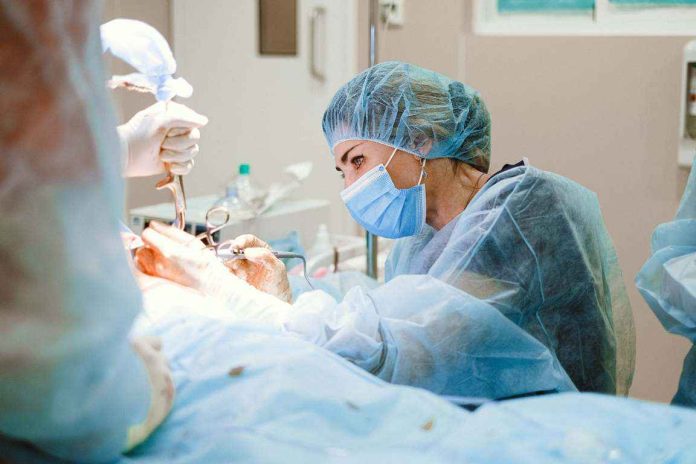As a surgeon interested in advancing your minimally invasive techniques, you should stay up-to-date on the latest technologies.
Robotic platforms, virtual reality simulators, and augmented reality navigation systems are transforming surgeries by enhancing precision, visibility, and access.
Read on as we discuss the top 4 technologies that improve outcomes for your patients while allowing you to perfect difficult procedures before entering the Operating room.
Table of Contents
#1 eLearning Surgical Training
As a surgeon, you know that mastering new techniques requires extensive practice. While you once had to rely solely on textbooks or cadavers to develop skills, you now have a powerful resource at your fingertips – online surgical training.
Watch Online Surgical Operations
Many platforms now contain huge libraries of recorded online surgical operations across every speciality. You can:
- Observe top surgeons performing innovative procedures from start to finish
- Pause, rewind, and review complex sections frame-by-frame
- Study annotations highlighting critical decision points and precision techniques
- Learn new approaches to challenging anatomical structures and scenarios
Customize Your Video Tutorials
You can now use edited clips to create personalized video tutorials covering speciality procedures. Share with residents to standardize training.
Interactive 3D Anatomy Models
Some platforms offer detailed anatomical models with layers, labels, and narrated animations. The interactivity helps build mental maps and muscle memory.
With on-demand access to techniques used at top hospitals worldwide, eLearning surgical training allows you to be an ever-evolving student of your craft.
#2 Telesurgery and Telerobotics
Imagine being able to collaborate with the best surgeons around the world without anyone needing to leave the OR. Telesurgery and telerobotics are making this a reality by allowing remote surgical control and assistance. Some new features of this tech include:
Robotic Surgery Systems
Telerobotic systems like the Da Vinci Xi allow you to operate robotically on patients from an offsite console. This opens up expertise by connecting you to patients globally.
Transmit Live OR Video Feeds
Integrate scopes, mics, and intra-operative imaging to share real-time procedure footage with mentors for assistance. Critical moments can be discussed instantly.
Annotate Surfaces in the OR
You can now sketch and annotate directly onto OR video feeds using augmented reality. Telementors can guide techniques by illustrating anatomical structures as you operate.
Telesurgery expands your capabilities and knowledge by surrounding you with the best support team possible. Eliminating geographical restraints means rural patients can access you as a top specialist without visiting your hospital. You also avoid tiring travel.
#3 Advances in Surgical Camera & Imaging Tech
A detailed visual understanding of anatomical structures is vital in minimally invasive techniques. New integrated camera systems and augmented reality imaging are helping you see clearer than ever inside patients.
Higher Resolution for a Panoramic Perspective
New 3D and 4K cameras give surgeons panoramic views inside the body without pixels or blurriness. Some even produce in-depth images without the 3D glasses required. This clarity and depth perception level enhances the visualization of subtle anatomical details.
Fluorescence Guidance for Precision
Special imaging employs dye tracers and fluorescence to highlight tissues like lymph nodes or cancers in real-time. The fluorescent targets stand out vividly to help surgeons achieve more precise tumour resections with clear margins under direct visualization.
360-Degree Views for Assessment
Spherical endoscopes capture a full 360-degree spherical image of anatomical structures. This allows review from any virtual angle after the procedure, aiding postoperative teaching and evaluation.
#4 Incisionless Surgery With NOTES
Natural orifice transluminal endoscopic surgery (NOTES) represents a paradigm shift in minimally invasive techniques. By navigating through existing hollow organs and puncturing internal entry points, surgery can be performed with no external incisions.
Benefits of NOTES include:
- No abdominal scars
- Reduced pain and internal trauma
- Faster recovery times
- Lower risk of infection and hernia
NOTES procedures are highly complex, requiring the creation of new ergonomic platforms and instruments like the EndoSamurai. Surgeons must also develop skills in endoscopy, laparoscopy, and flexible instrumentation in tandem.
As devices advance, NOTES could become a standard technique for abdominal procedures like cholecystectomies, appendectomies, lymph node dissections, and even obesity surgery. Incisionless surgery is positioned to disrupt traditional methods further than laparoscopy.
Conclusion
As a surgeon, embracing new technologies is key to advancing patient outcomes and your capabilities. From robotic systems to augmented reality imaging, the innovations discussed open doors to better precision, visibility, collaboration, and accessibility. Implement these forward-thinking technologies in your practice to transform your surgical operations and keep pushing boundaries.




